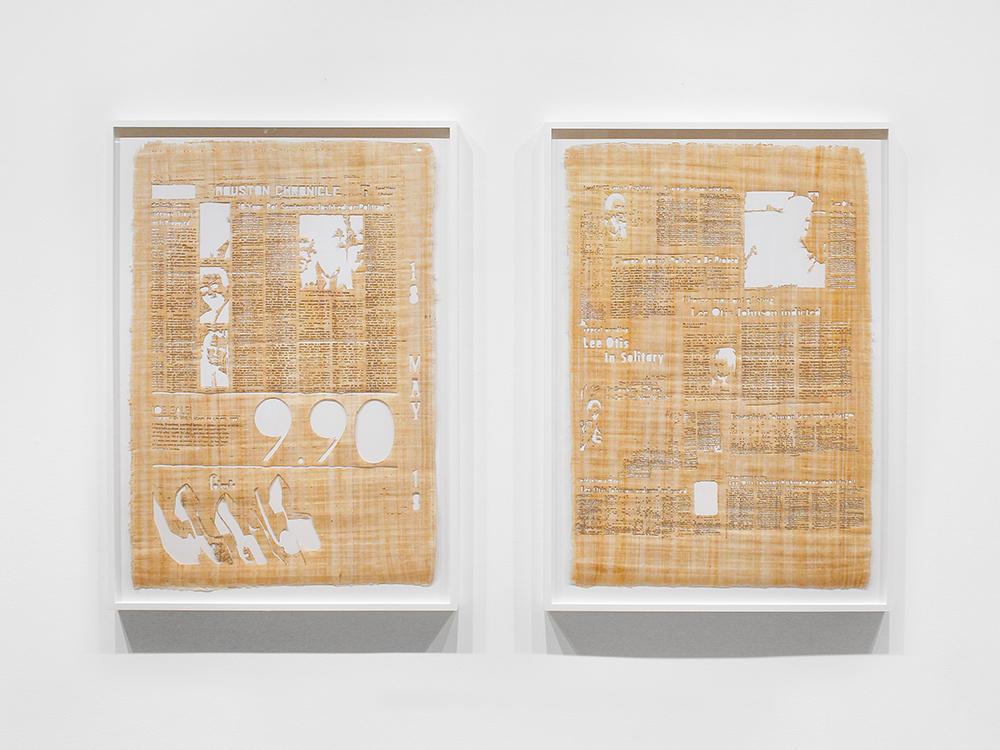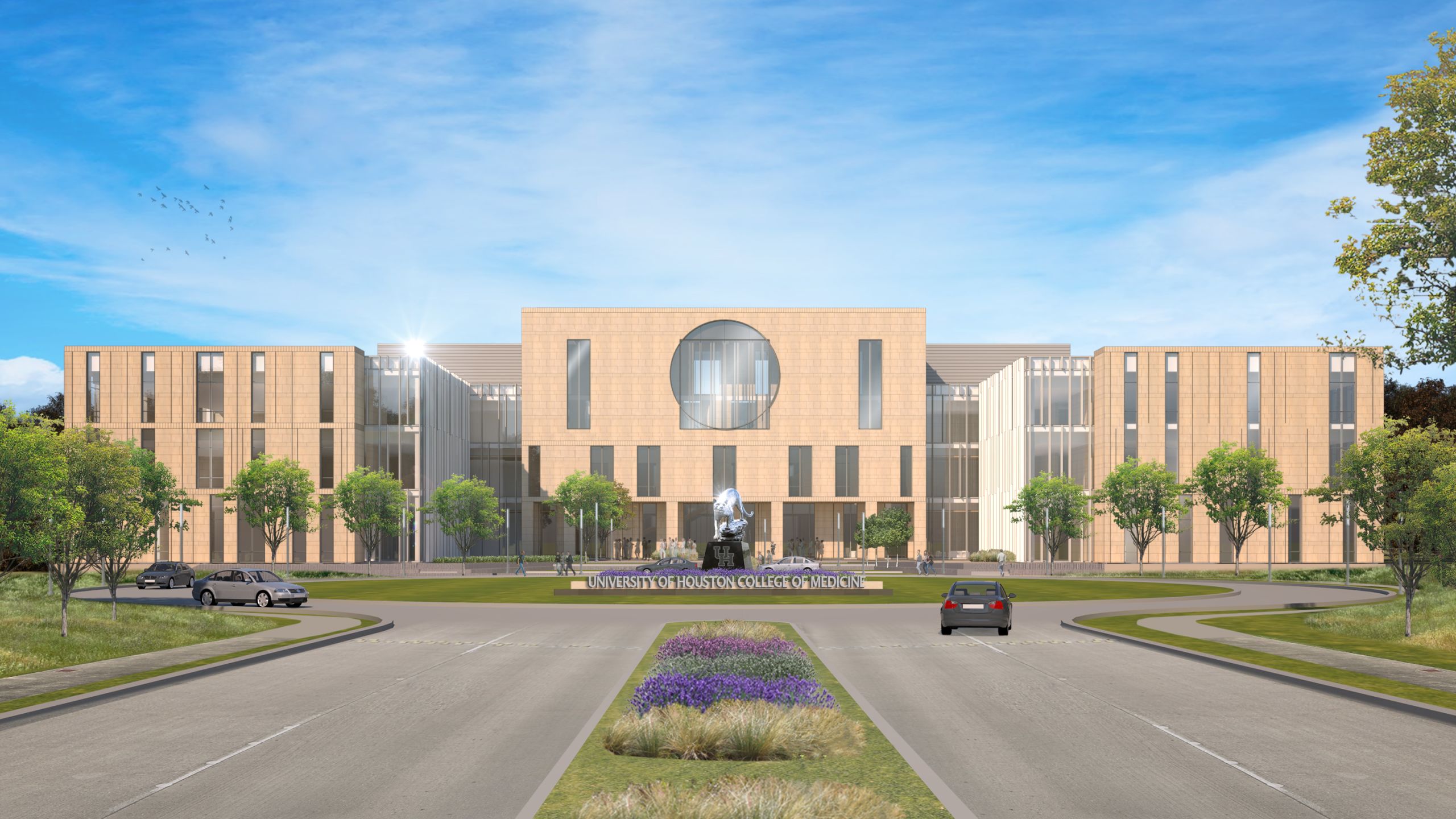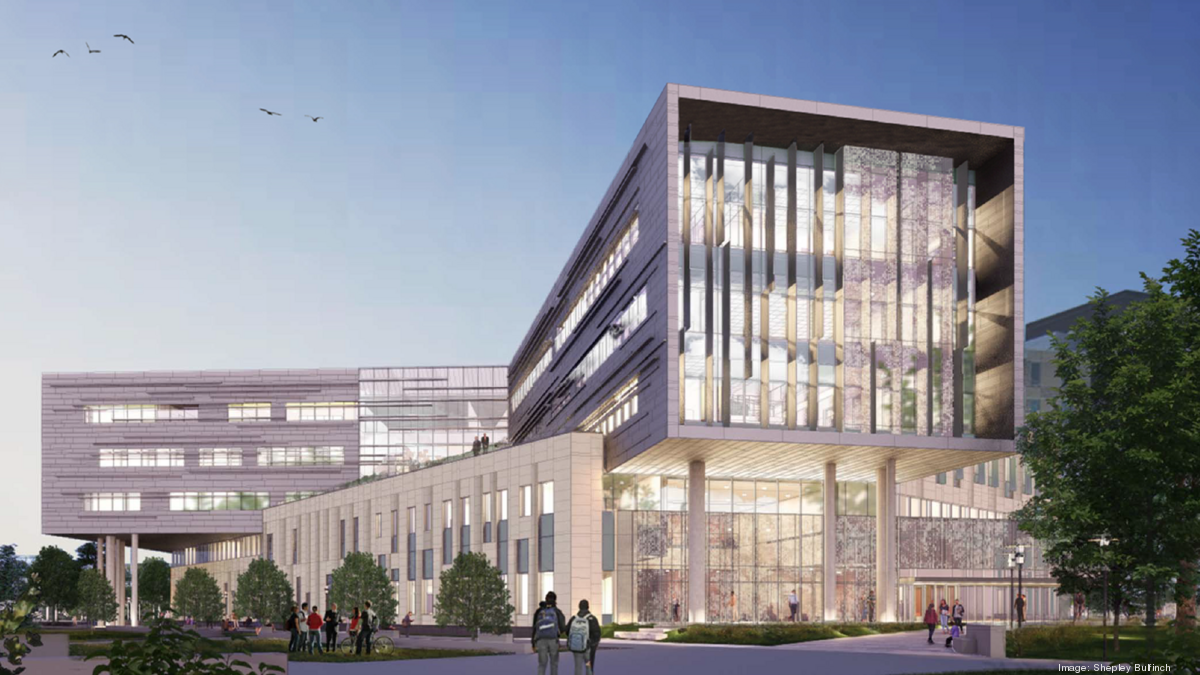
Two new buildings will join the University of Houston campus this fall semester and the work to get them finalized and ready for operations took a university team effort that included many departments from Administration and Finance.
The two buildings joining UH, Tilman J. Fertitta Family College of Medicine and the John M. O’Quinn Law Building, are situated on Martin Luther King Boulevard.
The O’Quinn Law Building is in the northeast corner of UH, between University Lofts and the current law center facility. The Fertitta Family College of Medicine is located across from MacGregor Park.
The buildings were approved by the Board of Regents about a year apart, with the College of Medicine being approved in November 2018, and the Law building in August 2019.
From the beginning, departments in Administration and Finance were hands-on with the planning of the buildings and none more so than Facilities/Construction Management.

The department, as with all capital projects, is involved every step of the way. It starts with the initial inception that includes talks with Facilities/Construction Management planners, and designers, preparing information for the State Legislative funding request, the approval from the Board of Regents, and then the design and construction of the buildings.
The projects did provide challenges for Facilities/Construction Management, and it had to do with timing. When both projects were getting off the ground, the COVID pandemic was ramping up.
“This presented a whole host of challenges in navigating the safety protocols to keep employees safe while keeping the projects moving forward,” said Facilities/Construction Management Assistant Director Jennifer Rea. “This was followed by the unprecedented supply chain and material availability issues facing the construction industry nationwide.”
Despite these challenges, Facilities/Construction Management forged ahead and met its opening date.

“Overcoming these challenges to ensure we met the opening required a dedicated team effort,” said Facilities/Construction Management Executive Director Nick Merry.
The COVID-19 impact aside, the department also dealt with a unique situation during the construction of the College of Medicine. While construction crews worked on the building, they discovered a nesting pair of bald eagles.
“Bald eagle nests are protected by federal statute, so we had to quickly relook at the construction site plan and partnered with US Fish and Wildlife Service and the local community to ensure we developed the right strategy for protecting the nesting site,” said Project Manager Ed Mader.
The strategy? Obtain a permit allowing the building to be constructed in proximity to the bald eagle nest.
UH’s Fire Life & Safety department is also involved with the project at the designing phase of the project holding many meetings with the engineering firm to discuss specific safety code items.
Once the schematic designs were done, Fire Life & Safety reviewed the plans for all the life safety systems in place.
“As they start the work, there are several different inspections that we do during the whole process of the buildings being built,” said Fire Life & Safety Chief Chris McDonald. “From when they start putting in firewalls, we look at the walls to make sure that they’ve sealed penetrations, installing sprinkler systems. And we test each floor to make sure that there are no leaks and that their sprinkler heads are in the right location.”
The College of Medicine has 497 sprinkler heads installed, while the Law Building has 471. When the building nears completion, the final step for Fire Life & Safety is to test every fire alarm in the two buildings, test the emergency lights, and test the ground for faulty circuit interrupters.

Meetings during the initial phases of construction are key for departments, and that includes the University Information Technology department. UIT got involved in the project when the architects of the buildings hired an IT designer.
“That’s when we start meeting with them, making sure that they understand our standards and our master specifications for designing all the network telecommunication security systems,” said Director of Technology Services Rita Barrantes.
The area surrounding the College of Medicine is planned to be filled with more buildings, and since it’s just outside campus, UIT had to install a central network facility to power the building. The central network facility will also power the rest of the buildings as they get built.
Additionally, in the College of Medicine, UIT installed 130 cameras, 90 Wi-Fi access points, 11 emergency phones, seven network facilities, and 20 switches. For the Law Building, UIT installed 130 cameras, 120 Wi-Fi access points, 10 emergency phones, five network facilities, and 40 switches.
Public Art also had a role to play in finalizing the Law Building and College of Medicine. The department worked with the dean, faculty, and key members of the leadership team to determine what values UH wants to showcase through the art in the new buildings.
Based on the feedback from these talks, Public Art created a shortlist of candidates. The department shared that shortlist with the stakeholders of the buildings and with the Public Art Committee for voting and making final selections.
“We have very strict curatorial standards and parameters as well as a collection development plan,” said Executive Director and Chief Curator for Public Art of the UH System, Maria Gaztambide. “So, we always want to make sure that we select artists who are more diverse in their background or experiences, who have a noteworthy trajectory.”

The department involves the stakeholders to ensure that the selected artists and artwork resonate with the values that the stakeholders want to transmit in the buildings.
The College of Medicine will feature a major commission by Leo Villareal that proved to be a technical challenge due to the nature of the piece, which is light-based. This is the first light-based art piece to be in a UH building.
Due to the nature of the installation and the technological challenges with it, Public Art worked closely with the architects before, and while the building was being constructed to ensure everything fit in place.
Leo Villareal’s art installation at the College of Medicine won’t be available for public viewing until October.
For the Law Building, the department chose an art piece from Rick Lowe, a UH professor of Interdisciplinary Practice.
The O’Quinn Law Building and Tilman J. Fertitta Family College of Medicine join a growing university and their addition to campus would not have been possible without the work of the Administration and Finance departments.
